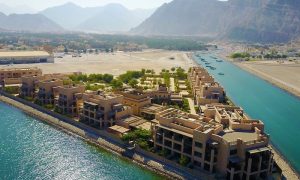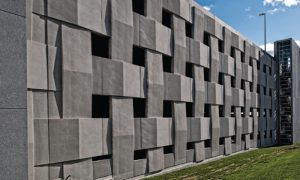Building the perfect data centre
There is no substitute for engaging a project manager who already has the first-hand experience to lead a quality-driven data centre development to successful completion, says Robin Keuning

Despite COVID-19, the Middle East data centre market has remained buoyant over the last few years, with growing internet penetration, social media usage, and smart initiatives continuing to drive the market. Yet despite growth and heightened demand, lack of skilled workforce continues to be a key market restraint in both the development and operation of new data centres.
If we look at sector experience, one could argue that project managers (PM) do not necessarily need to be a data centre ‘expert,’ to lead the successful delivery of data centre developments, although specific experience on projects of similar nature will naturally offer advantages.
Take the ten knowledge areas defined by the PMBOK, each of which can be applied on any project and across any sector, regardless of whether or not an individual PM has in-depth sector-specific knowledge and familiarity. Whether building a school, a commercial office building or indeed a data centre, one could argue that a good PM can transfer their skills from development to development, regardless of project typology.
As a graduate of Construction Management (BSc) and having worked in the construction industry across various sectors for over 25 years, I had always agreed with the view that construction project management is somewhat sector-fluid, that is until I was assigned onto my first data centre project.
There are huge volumes of literature on data centre design, construction and management concepts, but just how important is it for a commission’s project manager to fully understand these concepts? Afterall, it’s commonly in the mandate of the appointed specialist design team to have the specific ‘expert knowledge’ and data centre specific experience, rather than the clients’ appointed project manager.
When I joined my first data centre project in the Sultanate of Oman, I firmly believed a data centre to be nothing more than a complex electro-mechanical project. I learnt very early into the project just how important it was to understand the data centre industry, even if only limited to an overview of the key components. The exposure gained and lessons learned during the delivery of this facility, added tremendous value to the client when I moved onto my next data centre development. These details could arguably be easily overlooked by an un-experienced consultant, yet absolutely define the success or indeed failure of a data centre project, both from a quality and cost perspective.
Below are what I consider to be some of the key considerations to think about when project managing the successful delivery of a new facility, some of which if overlooked, could drastically affect both CAPEX and OPEX of a data centre development.
- Power considerations: Understanding the power availability from the grid and the power required to operate a facility is key, in addition to considering potential power requirements for future expansion plans. For example, there may be a local substation, however that’s not to say that its power will be available to use. Failing to consider these factors, could result in the costly and time-consuming task of laying down high voltage cables to the nearest available power source, in the necessity of a facility’s future expansion. My advice, even if the local distribution company indicates sufficient power is available, check the source to be sure.
- Site security: Consider whether the site is located within a secured complex, if not, significant additional cost will be required to provide site security locally, both during construction and operation.
- Operation efficiency and operating costs: The cost of appointing a critical facility manager to manage a data centre facility, can depend heavily on the area of operation. Cooling costs will reduce considerably if a data centre is located in higher altitude locations, where temperatures tend to be significantly cooler, that said, do not overlook the prospect that increased operating costs in such remote locations may deem such cooling cost savings as insignificant.
- Maintenance callouts: Depending on the level of fault tolerance, call out times for maintenance teams could be crucial in the case of a facility’s failure.
- Facility upkeep costs: Although construction costs of Tier-4 data centres are higher, upkeep costs during operation tend to be much less than that of a Tier-1 or 2 facilities. In addition, with multiple active paths for cooling and power, in the case of a Tier-4 facility, any after-hours failure can be attended to during working hours the next day, whereas a Tier 1 or 2 facility would require immediate attention.
Design Considerations
As a project manager, its good practice to be aware of the key design aspects to consider when developing a new facility with a client’s budget and future prospect in mind. Some key design considerations include:
- Raised floor vs other systems of distributing cooling: A raised floor with dampers for spot cooling is more efficient unless the data centre will be operating at 100% capacity from the outset, in which case, spot cooling is not as beneficial and a raised floor may not be necessary.
- Floor to ceiling height: At least 1.0m below the raised floor and 1.5m above the false ceiling is required. Collectively, 5.5 to 6.0m floor to floor height will be required. This will allow sufficient space for the cable ladders above the racks, (around 2.0m). Note, this cannot be considered retrospectively.
- Location of racks: Racks should be centred between two raised floor tiles to ease fixing. In addition, racks should always be at least 2.0m from the side walls, to allow sufficient space for IT staff maintenance and for the installing and removing of components inside the racks. Failing to consider rack location during the initial design, could result in unusable racks, and a reduction in planned capacity. Lights, CCTV cameras, and cable ladders should also be properly coordinated to avoid blocking light or line of site for cameras.
- Integrated System Testing (IST): Server rack heaters to simulate the heat generated by a server should be specified in the design, this will avoid the contractor using other methods to generate heat in the data hall, which may subsequently result in hotspots that could damage rack accessories and gauges during the IST.
BMS vs EMS: BMS systems are complex and expensive in comparison to an EMS. Understanding what will be monitored by each system and the data centre operators’ protocols will avoid duplication and may generate significant savings to the project.
Despite identifying sector-wide skill and material shortages, our recent research reveals a resilient sector that is primed for continued widespread growth.
Although I fully support the notion that an experienced project manager can add value on any commission within any sector, I believe there is no substitute for engaging a project manager who already has the first-hand experience to lead a quality-driven data centre development to successful completion.





















